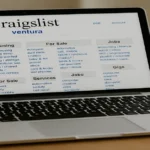The study of rates of change and accumulation is the focus of calculus, a fundamental area of mathematics. Engineering, physics, and economics, among others, rely heavily on this topic. However, many students have difficulty making the leap from high school mathematics to calculus in college. This is due to the fact that many students enter calculus without having mastered the prerequisite concepts of algebra and precalculus. How to bridge the gap between algebra and calculus in high school and calculus in college is the topic of this essay.
Strengthen Algebra and Precalculus Skills
It is highly recommended that students have a solid grasp of algebra and precalculus before beginning calculus. Functions, graphs, logarithms, exponents, and trigonometry are all important topics for high school students to learn. In addition, they need to learn how to solve problems and exercise their proficiency with equations and inequalities. Algebra and precalculus textbooks, internet materials, and tutoring programs are all available to help students with their studies.
Develop a Growth Mindset
Lack of self-assurance and a preconceived notion that one is not competent at math are major factors in many students’ failure in calculus courses. Students who adopt a “growth mindset” are better equipped to push through this obstacle. To have a growth mindset is to think that one’s level of intelligence and skill can grow with practice and effort. Students should work on recognizing when they need support, asking for that help, and seeing difficulties as learning experiences.
Practice Calculus Concepts
Students can begin practicing calculus ideas after they have established a firm grasp of algebra and precalculus and adopted a growth mindset. The fundamentals of calculus, including limits, derivatives, and integrals, should be covered first. Next, they need experience using these ideas in practical situations. Textbooks, online materials, and specialized software all exist to help students learn calculus and hone their skills.
Seek Support and Resources
It’s important for kids to remember that it’s okay to ask for help when they’re struggling with a difficult concept like calculus. Getting a good grade in calculus is easier with the help of a tutor, a study group, or any of the many online resources made available by today’s universities. In addition, students can take advantage of math clubs and calculus seminars and workshops to learn more about the topic.
Stay Motivated
Finally, it’s critical to have a positive attitude and consistent dedication to your calculus studies. The best way for students to succeed is to plan for it, work toward it, and then revel in their accomplishments. Students can maintain their motivation and interest in calculus by learning about its practical uses in other disciplines, such as engineering, physics, and economics.
Emphasize Understanding over Memorization
Learning calculus solely by rote repetition is ineffective. It is important for students to grasp the ideas underlying the equations and formulas. Real-world mathematicians need to know how to interpret and apply concepts like limits, derivatives, and integrals. In order to fully grasp the material, students should also practice explaining it in their own words and solving problems systematically.
Use Real-World Applications
Students can better grasp the relevance and importance of calculus by applying their knowledge to real-world situations. Calculus has many practical uses in other disciplines that students can investigate. Students can further their comprehension of calculus by working on projects and conducting research in areas that particularly interest them.
Build on Prior Knowledge
Many of the ideas and techniques introduced in calculus are extensions of those introduced in earlier math courses. The best educators are those who assist their students make sense of the world by making connections between diverse ideas. For instance, students can use what they learned in algebra about approaching a number from both positive and negative directions to the concept of limits.
Encourage Collaborative Learning
Learning calculus in a group setting can help students learn the material more thoroughly. As a means of problem-solving and conceptualization, teachers can set students up in pairs or small groups. This has the potential to improve students’ ability to learn from one another, communicate with one another, and work together in the classroom.
Provide Feedback and Reflection Opportunities
Finally, instructors should allow for student response and reflection. This can aid pupils in recognizing their own areas of excellence and progress. Teachers can utilize assessments like quizzes, examinations, and homework to provide students immediate feedback and prompt introspective thinking about what they’ve learned. Students can evaluate their own performance and formulate plans for further education.
Conclusion
In conclusion, a solid grounding in algebra and precalculus, a growth attitude, practice, support, and motivation are necessary for constructing a bridge to calculus. Students who put in the time and effort to master these concepts in high school will be well prepared for calculus in college and the many lucrative opportunities it can lead them.











